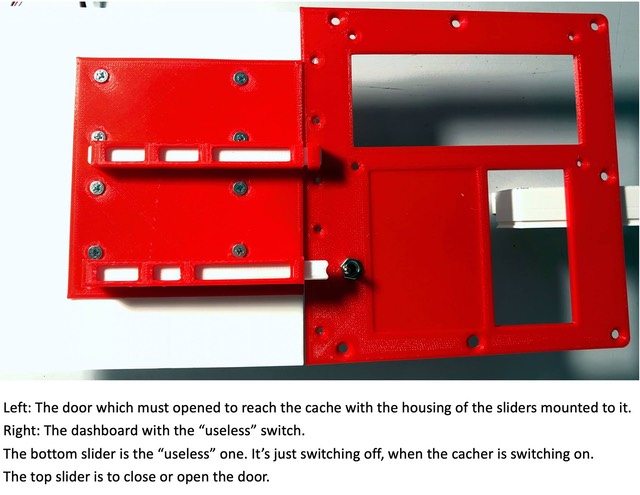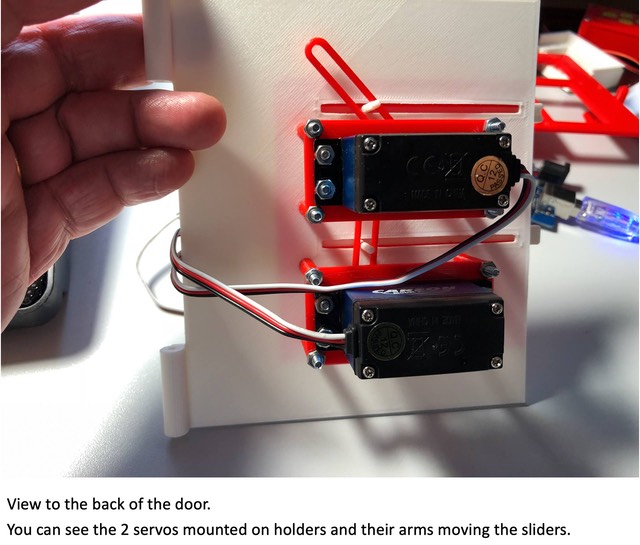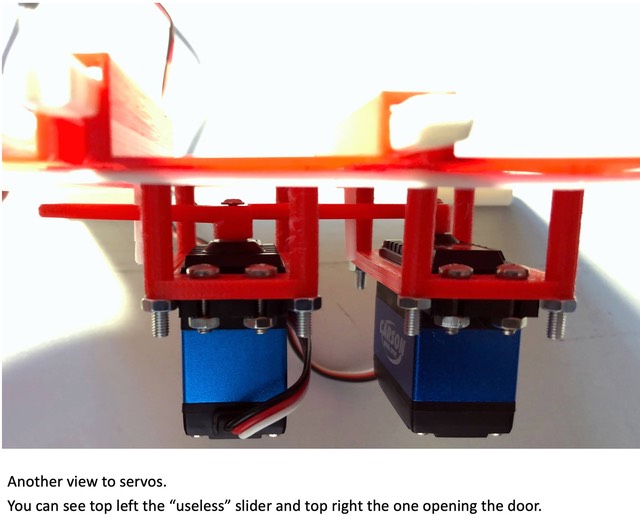While I was working on the „reaction cache“, I’ve discovered on YouTube some videos about „useless machines“. The one below is one of a lot of clips:
As you can see, the only task such an useless machine is performing is switching itlself off, when it was switched on. Bruno Munari, an Italian artist, started building such machines already in the 1930th, but most of the useless machines of today are based on a principle from Marvin Minsky, who worked as a graduant student at the Bell Labs in 1952 (more about here…). Later Minsky became a professor at the MIT and a pioneer in artificial intelligence. Another name for an useless machine is sometimes „Leave-me-allone-Box“.
I was excetided about the principle of an useless machine and immedeatly I decided to try building a cache based on it. So I’ve put the reaction cache on hold and started with this one.
The design of my useless cache will be quite different. I hope I’ll be able to show some pics in some weeks.
And there’s another important topic: I’ll integrate the principle into a kind of field puzzle. If you’ll only switch on, the switch will be turned off. But if you’ll switch on and off very fast , the puzzle is solved and a second slider will open the door to give access to the logbook. After a specific time the cacher will receive a hint.
As you can see in other videos, sometimes the finger, switching the machine off, has different patterns. I have included into my sketch 5 different ones. Four will have different speeds only and one will stop just prior reaching the switch, moving back a little bit and finally switching off very quickly.
Different speeds are something I had to manage by my sketch, because a servo is allways turning with a fixed speed. But instead of e.g. turning by 60° you can turn it e.g. 60 times by 1° with a kind of delay after each turn. For sure I don’t use delay(), because that comand is totally stopping the Arduino but my own subroutine Wait_a_While().
Status 10/24/2018:
- The sketch is 100% written already, but not tested
- All parts are already designed and ready to be printed
- And some parts are already printed:
- the door,
- the housing for the sliders which will be mounted onto the door
- 2 holders for the servos
- 2 different servo hands
- 2 different sliders (one for the useless part, one to unlock the door)
Status 10/28/2018:
Most of the parts have been printed and yesterday I built together all the parts of the door. All was fitting quite well, but I discovered a real problem. The servo wasn’t strong enough to switch off the „useless“ switch. After thinking about I noticed, there might be 3 causes for that issue:
- The servo might not be strong enough. It’s a Carson CS-3 with 31 Ncm torque. There’re different servos with a higher torque available, e.g. the Carson CS-6 with 60 Ncm in exactly th e same housing.
- The switch might be too strong to move. But where at Amazon ist stated that a switch being offered is smoother?
- Both the servo and the switch might be ok, but the power of the Arduino given to the servo is too poor.
Without diving a little bit deeper there was no chance to decide which way to go. So I’ve changed the hardware setup today: I’m using 4 AA batteries to power on the Arduino. But the servo is directly connected to that batteries, not to the power out of the Arduino. Discovering that the problem was still the same, my guess was that the servo might not be strong enough. So I’ve just ordered two CS-6 at Amazon which will be delivered on Tuesday.
Because I’ve decided to stay with the 4 AA batteries a new version of the dashboard is just printed by my Ultimaker 3. It’s the first time, I’m using (black) CPE+ from Ultimaker. Printing temperature is quite high and also the temperature of the built plate.
up to 12/16/2018
In the meantime, I’ve worked a lot on this cache and I’m still updating parts, I’m printing in 3D.
This isn’t the actual version, because I’ve changed from a 9V batterie block to 4 1,5V AAs.
I’ve already prepared the ammo can and so I hope, I can start putting all the parts together quite soon. But I've also redesigned the two sliders to fit them better into their leads. When that’s done I need to code the sketch with the „unlocking“ part.
status 12/20/2018
Yesterday I’ve put the first time all together and made a first test. It’s working, even if there’s still a lot to be optimized…
Stay tuned…
… I’ll continue to report
The sketch will be available for download here, when finished...


